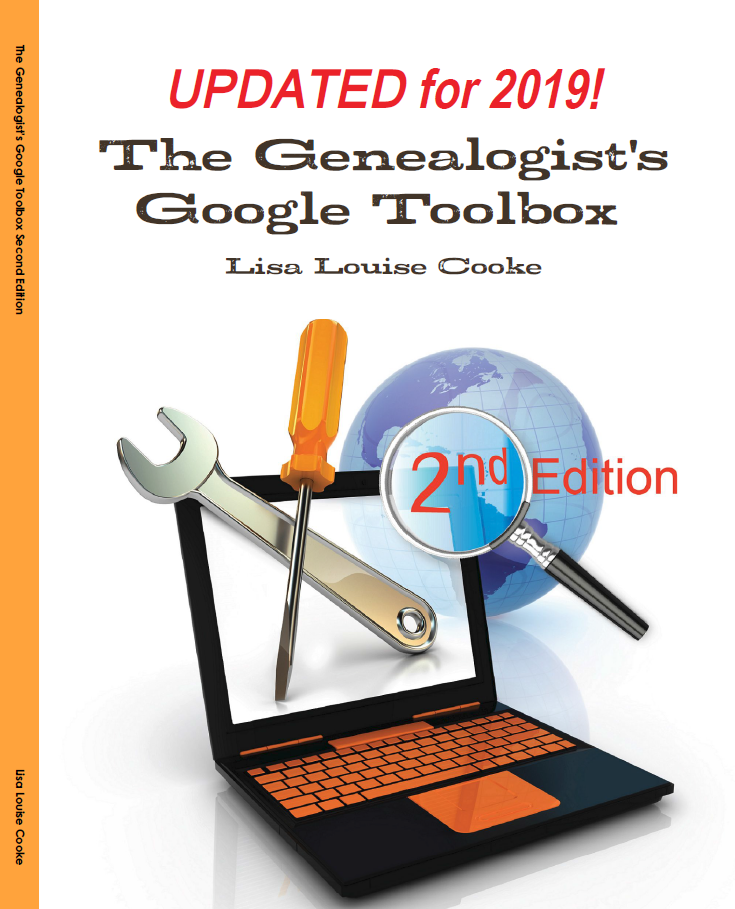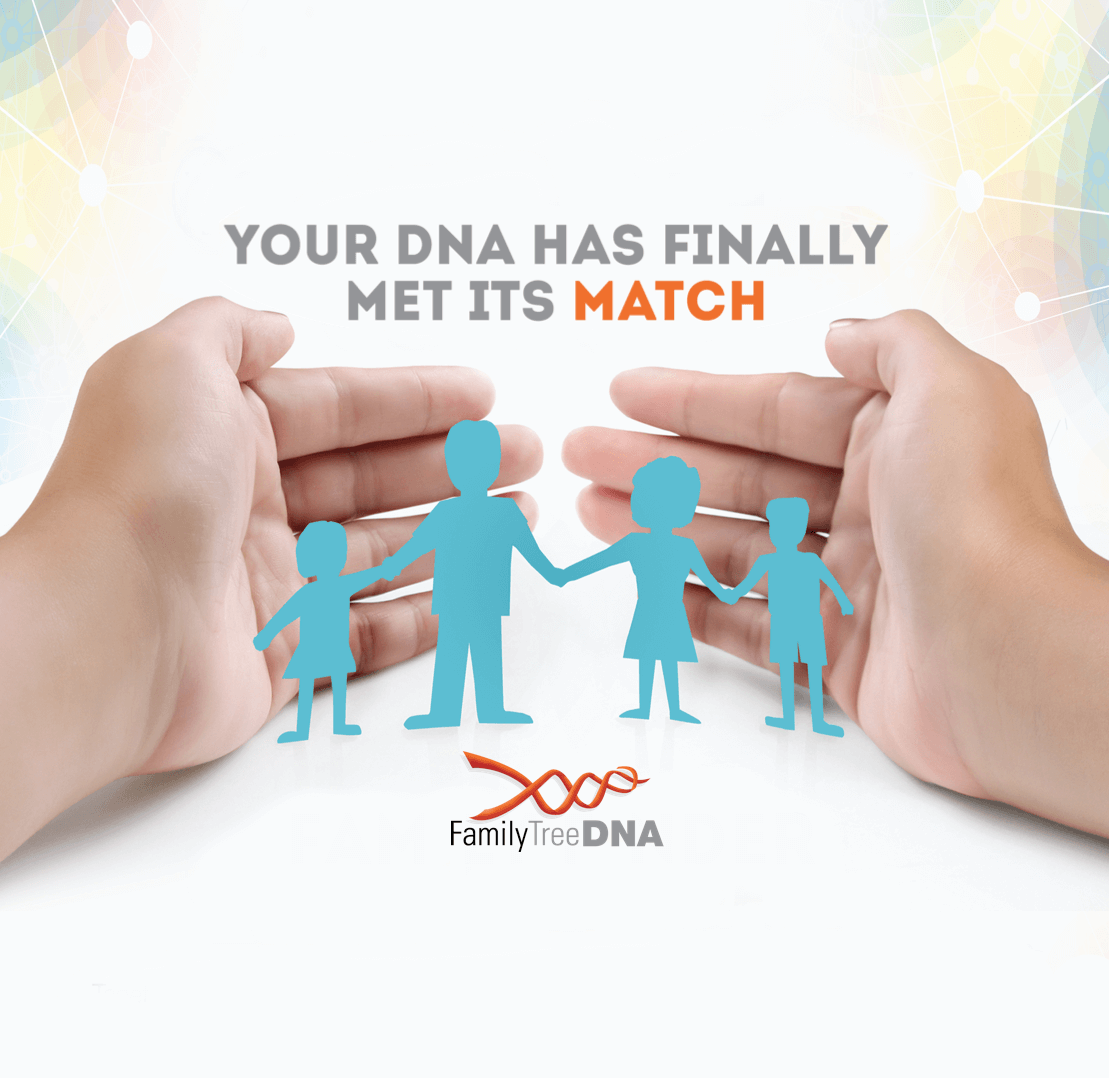Blog

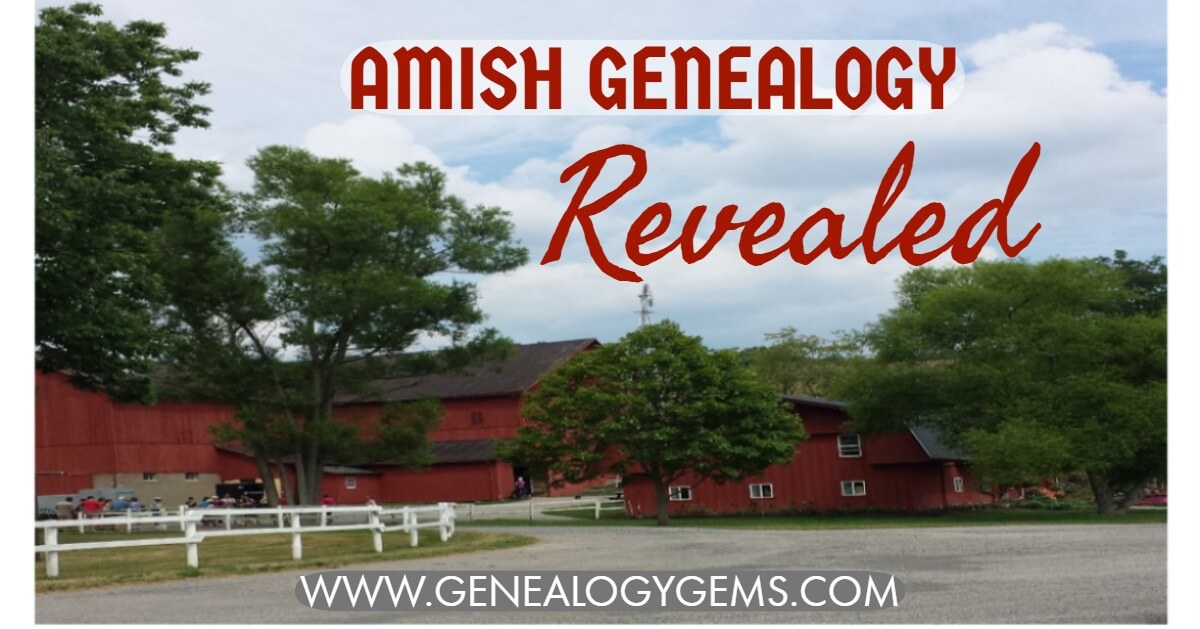
Amish Genealogy Revealed
Amish genealogy is revealed with Facebook! Well, sort of.
I made a recent visit to Amish country and I couldn’t resist talking genealogy with my new friends. I learned a lot about resources for family history and gained invaluable insight that I’m here to share with you. If you have Amish or Mennonite heritage in your family history, you won’t want to miss this amazing information!

The Amish Facebook Equivalent: The Budget
The Budget is the Amish newspaper our guide wittily referred to as “Amish Facebook.” However, this Facebook alternative has been around since 1890! The Budget covers news from all over the United States and Canada pertaining to the Amish and Mennonite communities and families. Who just got married, who had a baby, and who recently passed away…it’s all in there!
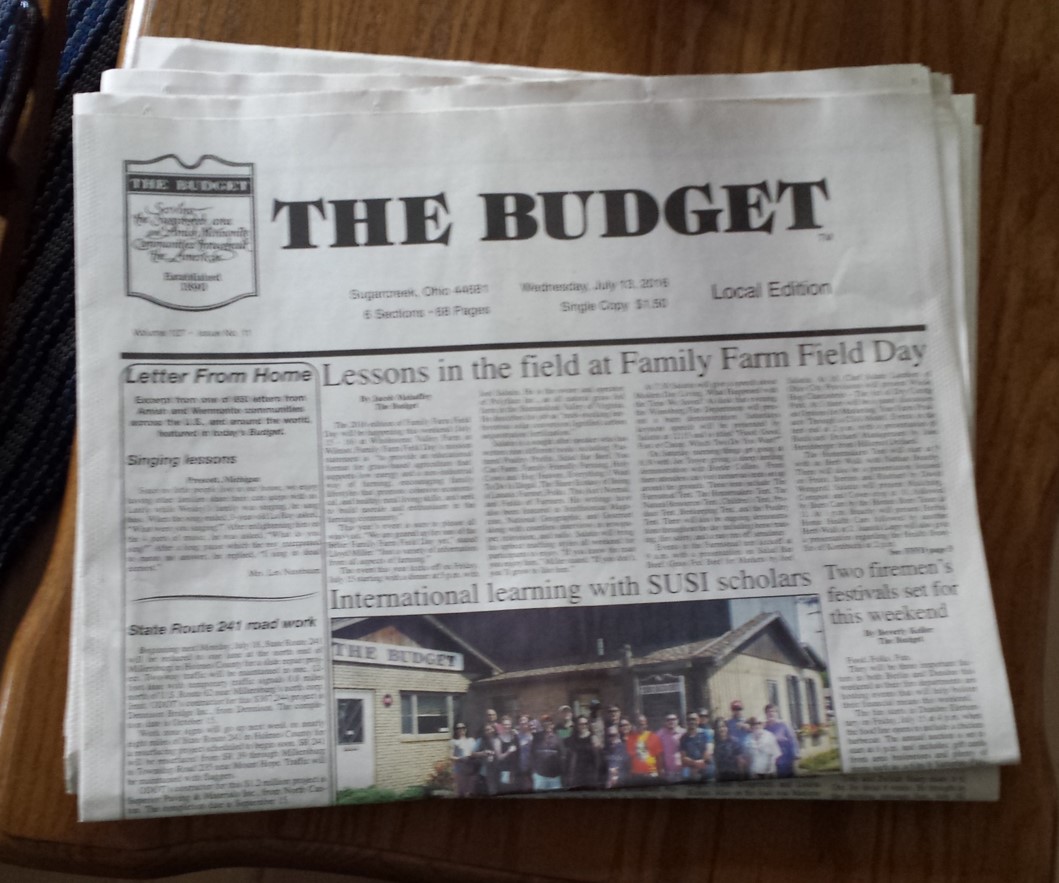 Each weekly edition comes out on Wednesday and the cost is $1.50 per paper. However, you can save by signing up for a 6-month, 1-year, or 2-year subscription. They have local and national editions and you can check out all the subscription prices at their website here.
Each weekly edition comes out on Wednesday and the cost is $1.50 per paper. However, you can save by signing up for a 6-month, 1-year, or 2-year subscription. They have local and national editions and you can check out all the subscription prices at their website here.
Local public libraries in the area may have copies of The Budget in their archives or on microfilm. Be sure to call the library and speak with someone in the history or genealogical department to determine what is available.
You may be thinking, “Wait a minute. I didn’t think the Amish liked having their pictures taken.” But you will actually find many nice pictures in The Budget. I learned not all Amish and Mennonite’s have the same rules about photography. Often, rules about photography, clothing styles, and even the types of dolls a child has are determined by the Bishop and church leadership of that district.
I was delighted to also learn The Budget has its own traditional Facebook page, too, where I could keep up with some of the local news.
The Amish Church Directory
The Amish churches are divided into districts. A district may cover more than one county. They are not necessarily based on county or town borders, but rather encompass about 50 families in a given vicinity.
Most Amish families are listed in a church directory for their area. Not all districts find a directory “important,” said my guide.
My new friend at Yoder’s Amish Farm also shared with me the genealogical value of such a directory. He said the directories came out “most every year” in his district, though not all districts publish yearly. By using the directories for any given district, you could easily piece together a very accurate family genealogy.
The directories are listed by surname of the head-of-household. Each family listing includes their home address, which is particularly helpful to the many local government agencies, my guide mentioned. Each member of the family is listed by first name and birth date.
Marriage dates and death dates, if applicable, are also included. If there has been a second marriage involved due to widowhood, the deceased spouse and the couple’s children are also listed. Maps are also found in the church directory so you can keep track of where all the cousins are living!
Directories can be purchased by anyone and are often found at local dry-goods stores within the communities.
Amish Genealogy Family History Books and Newsletters
You may be interested to know that many family history books or published newsletters exist for Amish family genealogies. You will most likely find these books and newsletters at a local library. Sometimes, they are available to purchase from local dry good stores in the area.
Even better yet, try Google! I Googled Amish Yoder Family History and learned about the Oregon Mennonite Historical and Genealogical Society newsletter. It was packed with great information!
The large bound volumes of Amish genealogy may hold thousands of names and dates. Many begin with a detailed history of who came to America, or who came to a given state or area. Then, it will map out for you the family branches.
Using a few of these wonderful sources may help you trace your genealogy farther than you ever imagined. Happy hunting, friends!
Discover even more ancestors with Google!
To learn more amazing techniques about using Google for your genealogy research, check out Lisa’s The Genealogist’s Google Toolbox, available in the Genealogy Gems store.
The update includes corrected links and resources to replace any outdated or defunct information. You’ll learn more about all the Google tools you need to master to aid you in your family history. Better yet, after you learn how to use these tools for family history research, you’ll find yourself using them to find all kinds of things!
This article was originally posted on August 29, 2016 by Amie Tennant. It was updated on April 5, 2019.

Find Ancestors in These New Genealogy Records Online
A brand new vital records collection is available online now for Ontario, Canada!
The Ontario Genealogical Society’s new database is available at Findmypast, along with exclusive Parish Registers for Kent, England.
Ancestry.com also has a new collection of Parish Registers for Cheshire, England.
Finally, you can explore a new index of Ohio WWI Statement of Service Cards. As a bonus, watch our special interview with the CEO and the VP of Findmypast about family trees, unique collections, and more.
Featured: Genealogical records for Ontario, Canada
The Ontario Genealogical Society has created a database of vital records, which are now available at the Genealogy Giant records website Findmypast! The Ontario Genealogical Society Provincial Index is a compilation of announcements found in Canadian publications. You may find out your ancestor’s death date, burial date and place, as well as the names of your ancestor’s parents, children, and spouse.
With every result, you will be presented with a transcript featuring the vital details found in a Canadian publication. The records mostly comprise obituaries, but you will also find birth and marriage announcements. Details might include:

- Name
- Event year
- Death year
- Periodical
- Publication year
- Publication date
- County
- Province
- Country
- Notes – this is the most valuable field. It will provide nearly the full text of the announcement as it appeared in the publication. This may provide you with details about the person’s death, burial place, next of kin, parent’s names, children’s names, and more.
WWI Military Records
Next, we head over to FamilySearch, where a new collection of Ohio, World War I Statement of Service Cards, 1914-1919 has been added. This collection contains an index and images of statement of service cards for Marine Corps, Navy, and out of state enlistments which was provided for by an act of Congress July 11, 1919.
- Name
- Age at enlistment
- Race
- Home address
- Location where enlisted
- Rating (Rank)
- Service number
- Date of discharge
The image below is an example of a Marine Corps Service Card, 1917 courtesy of FamilySearch.org.
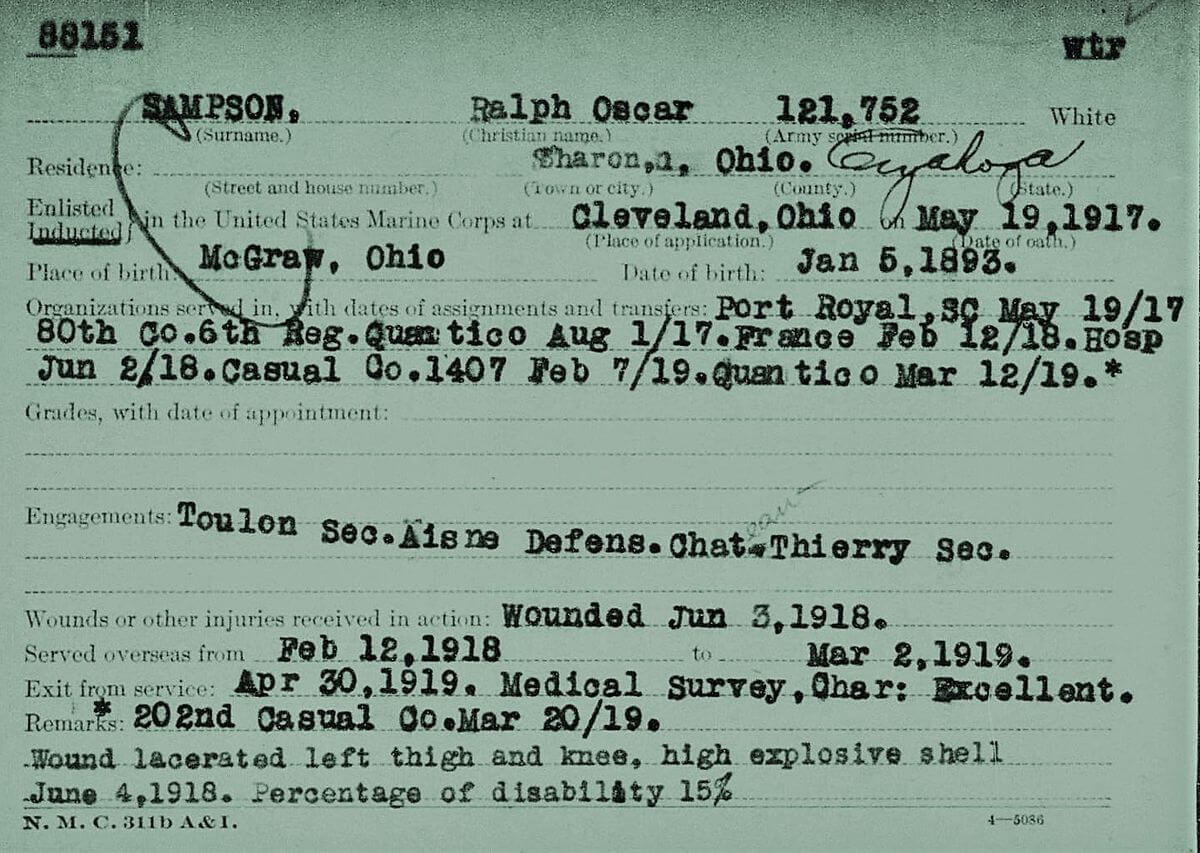
England Parish Registers
Also added this week at Findmypast are new and exclusive Parish Registers from Kent. “The new records have been created from over 3,000 handwritten registers currently held at the Kent History and Library Centre in Maidstone. These registers, covering hundreds parishes across the county, have been scanned and digitised in full colour to ensure the highest possible image quality.
Over 2.6 million fully indexed baptism, banns, marriage and burial records spanning more than 400 years of Kent history are now available to search online exclusively at Findmypast.”
Over at Ancestry.com, there’s a new collection of Cheshire, England, Parish Registers, 1538-1909. From the description:
“Parish records are the best source of vital record information before Civil Registration began in 1837. Both the British government and the church had an interest in record keeping, and a 1538 Act of Parliament required ministers in the Church of England to record baptisms, marriages, and burials. This database includes records with dates ranging from 1538 up until 1812, after which George Rose’s Act called for preprinted registers to be used as a way of standardizing records.
Also note that marriage records were to be kept in a separate register starting in 1754, so they may not be included in this database.”
More to learn about Findmypast.com and FamilySearch tree synchronization
In the exclusive video interview below, Tamsin Todd, CEO and Ben Bennett, Executive Vice President at Findmypast.com provide the answer to the question, “Will or does Findmypast have a family tree?”
They also talk about the new Travel & Migration records, and the Suffragette Collection.
If you have ancestors from the United Kingdom and the Republic of Ireland don’t miss this interview by Sunny Morton, author of “Genealogy Giants – Comparing the 4 Major Genealogy Records Websites” quick reference guide.
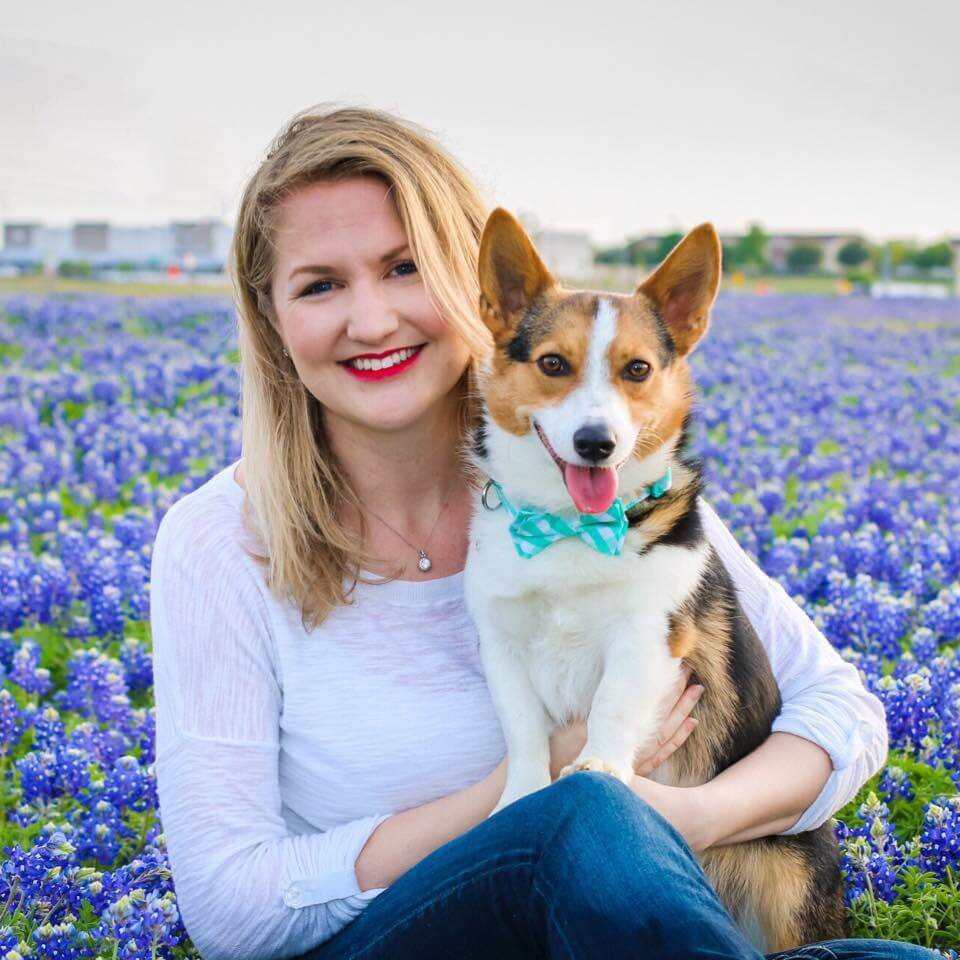
Lacey Cooke
Lacey has been working with Genealogy Gems since the company’s inception in 2007. Now, as the full-time manager of Genealogy Gems, she creates the free weekly newsletter, writes blogs, coordinates live events, and collaborates on new product development. No stranger to working with dead people, Lacey holds a degree in Forensic Anthropology, and is passionate about criminal justice and investigative techniques. She is the proud dog mom of Renly the corgi.
Disclosure: This article contains affiliate links and Genealogy Gems will be compensated if you make a purchase after clicking on these links (at no additional cost to you). Thank you for supporting Genealogy Gems!
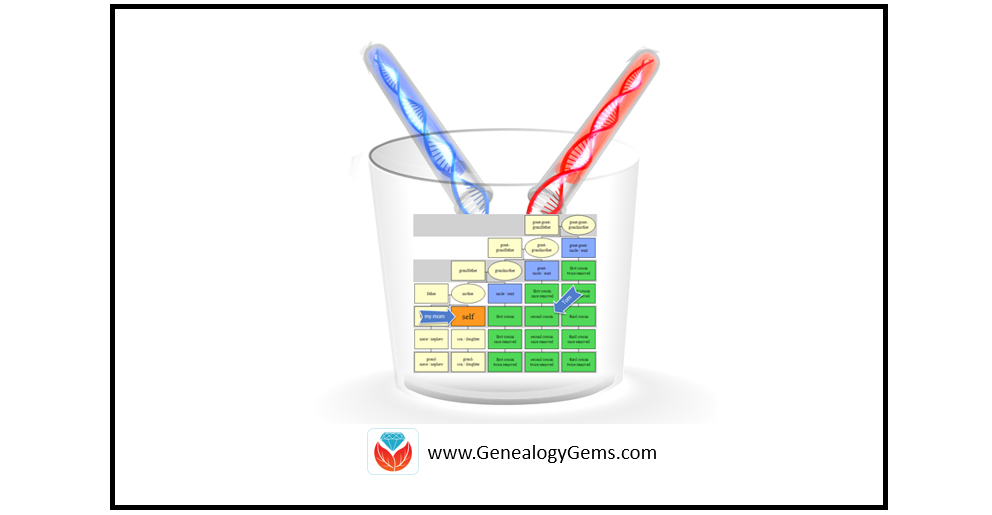
Adoption DNA Match Strategy: Combine DNA Test Types
Combining DNA test types can give you a better picture of your overall genealogical relationship to someone else. DNA expert Diahan Southard shares an example from her family about how she used different DNA tests to solve an adoption mystery.
Combine your autosomal test results with the results of your mitochondrial DNA or YDNA test to make some amazing connections today!

My family recently visited the Jelly Belly Factory in northern California. Of course, at the end of the tour, they funneled us into their gift shop where we felt compelled to buy jelly beans and other sundry treats.
My favorite part of the big box we bought were the recipes on the side. We could turn the already delicious variety of flavors into even more pallet-pleasing options by eating specific combinations of jelly beans at the same time. Like 2 green apply jelly beans + 1 cinnamon jelly bean = apple pie. Who knew!
Naturally, this got me thinking about DNA.
Combining DNA Test Types
Specifically, I was thinking about the power of combining multiple test types to get a better picture of our overall genealogical relationship to someone else.
If you recall, there are three kinds of DNA tests available for genealogists:
- Autosomal DNA
- Mitochondrial DNA (mtDNA)
- Y chromosome DNA (YDNA)
Much of the focus these days is on how to use the autosomal DNA in our family history research. This may be because the autosomal DNA covers both sides of your family tree, so it is seen as a catchall for our family history. While it is a very powerful tool for our research, it can also be a bit overwhelming to try to determine how you are related to someone else.
Let’s look at an example from my own family history.
My mom took an autosomal DNA test at 23andMe and matched with Tom. Their predicted genealogical relationship, based on how much DNA they shared, was second cousins.
To begin to understand how they are related, we need to understand which ancestor could be shared by people who are genetic second cousins. To figure it out, you can count backward like this: people who share parents are siblings, sharing grandparents makes you first cousins, and sharing great-grandparents makes you second cousins.
So, if my mom and Tom are true second cousins (meaning there aren’t any of those once-removed situations going on, but that’s a subject for another time), then we should be able to find their common ancestor among their great-grandparents.
Each of us has eight great-grandparents. Because we can’t usually narrow down shared DNA to a single person, but rather to an ancestral couple, we are really just looking at four possible ancestral couple connections between my mom and Tom.
My mom doesn’t have any known ancestors, as she was adopted, so we can only evaluate Tom’s line. Tom was kind enough to share his pedigree chart with us, and he had all four of his couples listed. But how do we know which one is the shared couple with my mom?
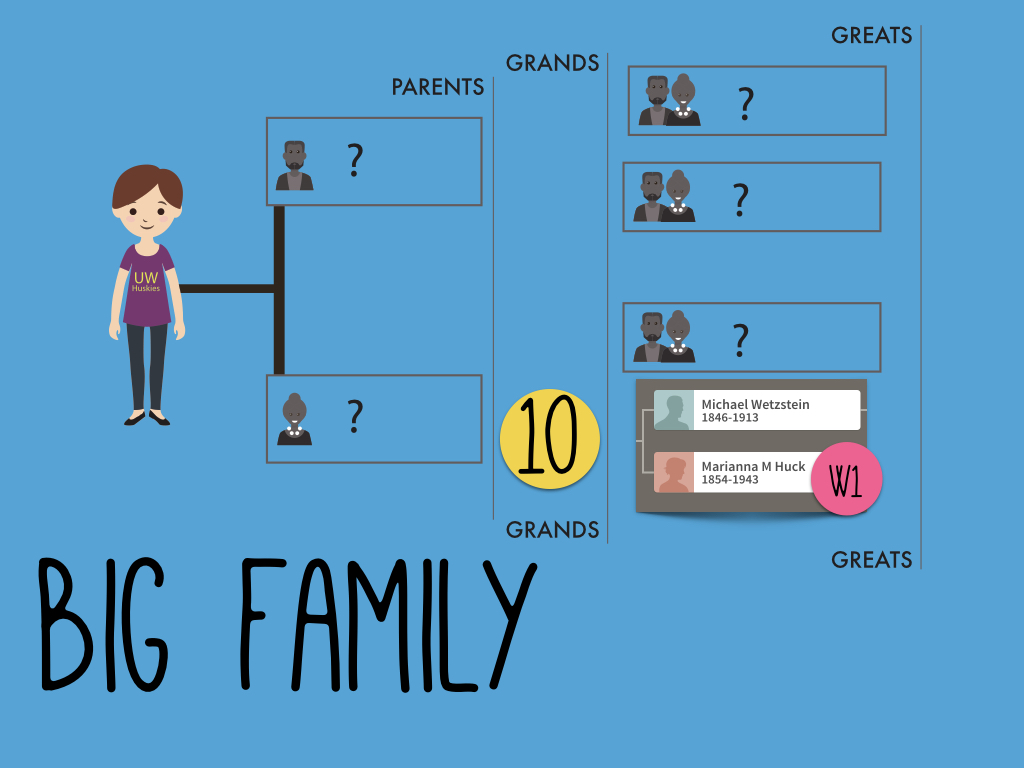
Narrowing Down the Results
Now, for those of you without an adoption, you will have some other clues to help you figure out which of the four (or eight, if you are looking at a third cousin, or 16 if you are looking at a fourth cousin) ancestral couples is shared between you and your match. Start by looking for shared surnames.
If that comes up short, evaluate each couple by location. If you see an ancestral couple who is in a similar location to your line, then that couple becomes your most likely connecting point.
What then? Do genealogy! Find out everything you can about that couple and their descendants to see if you can connect that line to your own.
However, in my mom’s case, we didn’t have any surnames or locations to narrow down which ancestral couple was the connection point between our line and Tom’s. But even if we had locations, that may not have helped as Tom is very homogenous. All of his ancestors were from the same place!
But, we did have one very important clue: the mitochondrial DNA. Remember mtDNA traces a direct maternal line. So my mom’s mtDNA is the same as her mom’s, which is the same as her mom’s etc.
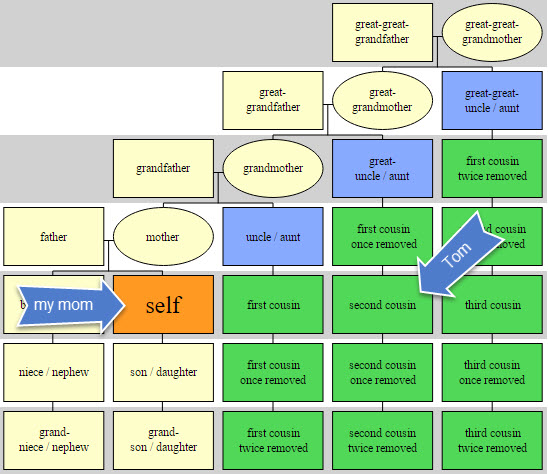
At 23andMe they don’t test the full mitochondrial DNA sequence (FMS) like they do at Family Tree DNA. For family history purposes, you really want the FMS to help you narrow down your maternal line connection to others. But 23andMe does provide your haplogroup, otherwise known as your deep ancestral group. These groups are named with a letter/number combination. My mom is W1 and we noticed that Tom is also W1.
This meant that my mom and Tom share a direct maternal line – or put another way, Tom’s mother’s mother’s mother was the same as my mom’s mother’s mother’s mother. That means there is only one couple out of the four possible couples that could connect my mom to Tom: his direct maternal line ancestor Marianna Huck, and her husband Michael Wetzstien.
Now you can only perform this wondrous feat if you and your match have both tested at 23andMe, or have both taken the mtDNA test at Family Tree DNA.
Just as a Popcorn Jelly Belly plus two Blueberry Jelly Bellies makes a blueberry muffin, combining your autosomal DNA test results with your mtDNA test results (or YDNA for that matter) can yield some interesting connections that just might break down that family history brick wall.
Get your mtDNA and YDNA tested at Family Tree DNA
If you are considering testing your YDNA and/or your mtDNA, then Family Tree DNA is the place for you!
Even if you aren’t trying to solve an adoption mystery, you can utilize these additional tests to break down other brick walls in your genealogical research and learn more about your heritage. You can take their Family Finder autosomal test, YDNA, or Mitochondrial (mtDNA) full sequence test. Click here to shop now!

About the Author: Diahan Southard has worked with the Sorenson Molecular Genealogy Foundation, and has been in the genetic genealogy industry since it has been an industry. She holds a degree in Microbiology and her creative side helps her break the science up into delicious bite-sized pieces for you. She’s the author of a full series of DNA guides for genealogists.
Disclosure: This article contains affiliate links and Genealogy Gems will be compensated if you make a purchase after clicking on these links (at no additional cost to you). Thank you for supporting Genealogy Gems!
This article was originally published on April 17, 2017 and updated on April 5, 2019.

